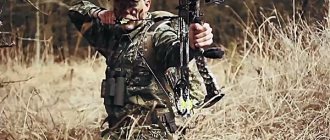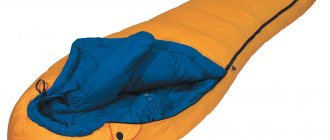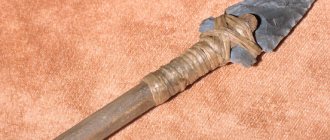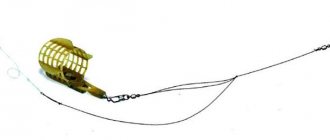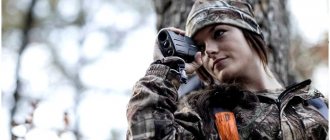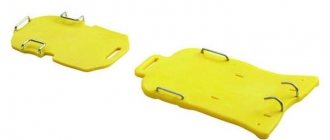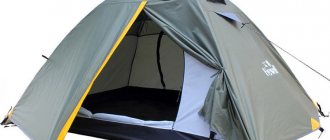Sports bow: description and characteristics
Sports bows come in three types:
- Traditional. They are arched shoulders with a bowstring stretched across them. Special devices, sights, and stabilizers are not attached to them. To increase the target firing range, they can have a recursive design, i.e. shoulders curved outward.
- Classic or Olympic. The principle of operation and design of these projectiles is the same as that of traditional ones. Collapsible models are often found. Additional devices are installed on the Olympic bow: sights, shelves, stabilizers.
Compound bow.
Most of them have a recursive structure. - Block. The most powerful and complex models. They consist of blocks connected by a system of cables. Equipped with many devices and accessories. Thanks to the pulley system, the archer does not need to exert excessive effort to tension and hold the bowstring.
Training bow: a type of bow with arrows
As we have already said, in our time you can buy a bow or crossbow for every taste. It is enough to enter a store that specializes in the sale of such small arms and your eyes widen. Here you can buy bows for children, women, and teenagers; various men's crossbows are available.
Looking at ancient, primitive models of bows, we can say with confidence that they have long since sunk into oblivion or are displayed in a museum as ancient exhibits. Their place was taken by more modern versions of crossbows and bows with arrows. In order for shooters to have the opportunity to use models that ensure accurate shooting, primitive bows have gone through a long path of changes. In ancient times, men's bows were used for shooting at living and non-living targets, while today there are special options for fishing, hunting, sports, and entertainment. If you are new to the store, they will offer you a model of a classic bow or crossbow; for more experienced shooters, compound options are quite suitable. There are interesting models for girls and boys whose parents want their children to learn archery.
Photos of different models of bows and crossbows are presented on our portal. Here you can choose the right bow for your children, as well as men's options and models for girls.
photo Beautiful girl with a bow
Bow and arrows for girls. Is it worth buying onions for a child?
Special attention should be paid to such a category of small arms as a children's bow with arrows. Many parents have probably wondered more than once whether it is worth buying such a weapon for their child, whether he will get hurt and harm others, what should a child’s bow be like? We will try to answer all the questions asked in as much detail as possible.
First of all, it’s worth saying that if you notice that your child is interested in archery and asks you to buy one, at least don’t refuse him a children’s bow. After all, this sport is quite exciting and interesting, it will allow your child to develop hidden abilities, teach patience and endurance, concentration and accuracy. In addition, archery is useful for children who have problems with proper posture.
Parents should not be surprised if it is not their son who asks for a purchase, but their daughter. After all, archery is not only a male sport, but also a female one, especially since a beautiful girl with a bow always looks effective and elegant. Photos of children's bows can be viewed on our portal.
For a child, you can buy a children's bow of a classic or block type. When choosing, you need to take into account the tension force that will suit your baby; advice on this issue can be obtained from the store seller. A bow or crossbow for a child differs from adult models in size and tension. The children's version should not be too heavy for the baby, despite the fact that the arrow's flight range will be slightly reduced, but it will be much more convenient to use. The structure of the bow for children, its mechanism of action, is similar to the adult male version. This also applies to arrows and additional accessories.
In order for a child to learn to shoot correctly, accuracy training is necessary. To do this, you can enroll your child in an archery club or conduct daily training yourself. However, if you want your child not to lose interest in a bow immediately the next day after purchasing it, we recommend signing him up for training in a special club, where experienced professionals will teach him how to shoot accurately over long distances. To become a professional archer, proper training is required.
Photo of a children's bow and arrow
How to choose a sports bow
There is no universal bow that would suit everyone. The weapon must be selected carefully, “on your own.” It’s worth exploring the assortment, asking experts, and looking for sources of additional information. It is advisable to try several options and choose the one that suits you.
Goals and characteristics that you need to focus on when choosing a bow:
- Purpose of purchase . When choosing a sports bow, you need to decide what it will be used for. This could be target shooting, participation in historical reconstructions, training in a section, or participation in competitions.
- Size. For each shooter, the size will be individual depending on height, arm span and physical strength.
Table 1. Dependence of bow length on the height of the archer
| Height (cm) | up to 130 | 130-140 | 140-150 | 150-160 | 160-170 | 170-180 | 180 and more |
| Length in inches | 48 | 54 | 58 | 62 | 64-66 | 66-68 | 68-72 |
| Length in cm (rounded) | 122 | 137 | 147 | 157 | 163-168 | 168-173 | 173-183 |
Table 2. Dependence of the length of the bow and arrows on the archer’s arm span
| Arm span (cm) | 137-143 | 144-151 | 152-158 | 159-166 | 167-173 | 174-180 |
| Bow length (cm) | 137 | 145 | 152 | 160 | 167 | 178 |
| Arrow length (cm) | 55-58 | 58-60 | 60-64 | 64-66 | 66-68 | 70 |
- Power. Archery involves constant repetition of the same actions, so the tension of the bowstring should not cause discomfort. Over time, when muscle strength begins to increase as a result of constant training, it will be possible to increase power. But at the initial stage you should not take too powerful a weapon.
- Presence of defects. During shooting, the bow will be subject to constant tension. When choosing, it is important to carefully check the device and its components. Even the slightest chip, abrasion or scratch can affect further operation or lead to breakdown. It is better to immediately ask the seller to replace the suspicious part, unit, or purchase another device.
- Reliability. The quality of all individual parts speaks volumes about the reliability of the item as a whole. This is important for the safety of the shooter and the longevity of the bow.
- Additional accessories. If your budget allows, it is tempting to purchase every possible accessory. But you shouldn't buy everything at once. It is better to limit yourself to the minimum - arrows, finger guard, guide shelf, gaiter. At first, items such as a sight, a plunger (setting the reach), and a clicker (timer) do not need to be purchased. You should gain shooting skills, get used to the weapon, and only then will it become clear what additional devices will be needed.
- Appearance. Aesthetic pleasure from the purchase plays not the first, but not the last role in the choice. Some people like minimalism, while others choose expensive accessories with beautiful finishes. The main thing is that the thing is pleasant to use. It is important not to neglect other parameters for the sake of beauty. After all, people buy onions not only to admire them.
Advantages and disadvantages
Selecting a bow is a slow process for a beginner. There are a large number of types of bows and their models. Different models are used for sport and hunting. Therefore, you shouldn’t buy an expensive copy right away. After a year of owning it or earlier, you may come to understand that it is not sport that is interesting, but hunting. Then you will have to change all the equipment.
When purchasing, you need to understand that the tension force can be adjusted within the indicated limits. This is important during training when a person is just starting to shoot.
During this period, you have to shoot hundreds of times a day. If the bow is too tight, the muscles will quickly get tired. In some cases, there may be ligament or muscle injuries. Bow and man may not be a good match. Therefore, the selection must be taken seriously.
Buying the bow itself may be cheaper than all the necessary accessories , and there are many of them:
- arrows;
Sports archery. - quiver;
- target;
- shelf;
- fingertip;
- gaiter, etc.
Arrows are a consumable item, but by purchasing a special target, you can reduce the likelihood of them breaking. They also tend to get lost.
Some bows are considered throwing weapons. In this case, a permit will be required to purchase them. The law has introduced a clear distinction. A bow is considered a weapon, with a string tension of 27 kg. All the rest are intended for relaxation and entertainment.
Having gone through all the stages of selection and purchase, the owner receives an unforgettable experience from learning to use it, and then from shooting. Having configured it correctly, we get the opportunity to shoot accurately and enjoy it.
Classic hunting bow.
Shooting technique
Before you start shooting, you need to choose the right weapon taking into account your parameters and learn the correct stance.
Before archery
It is necessary to straighten your shoulders, straighten your back, slightly tense your abdominal muscles.
- Your feet should be shoulder-width apart, almost parallel to each other.
- The weight distribution between the toe and heel will be 60% to 40%.
- Turn the body slightly towards the target.
The main thing in the stance is to correctly distribute the weight and anchor yourself relative to the ground.
The process of tensioning the bowstring
When choosing the right bow, be sure to try different models for draw weight. For this you need
- Get into a shooter's stance.
- Raise your right arm perpendicular to your body at shoulder level.
- Bend at the elbow and pull the string to the limit.
The optimal stretch can be considered to be one in which the hands do not tremble from excessive tension.
Shooting technology
Equipment elements required during shooting:
- Manufacturing. This is the correct posture for a shooter ready to start shooting. The legs are the support for the whole body and must be motionless. The body acts as a mechanical support for the weapon, therefore it is positioned vertically or slightly tilted forward. The head is turned towards the target, the neck muscles are moderately tense, the teeth are clenched. The bow string should be in contact with the tip of the nose and the middle of the chin, and the hand of the dominant hand should move along the jaw.
Types of production:
- open. The smallest angle between the bow hand and the shoulder line. The right leg is slightly moved forward;
- lateral. The legs are almost parallel to each other. The angle between the bow hand and the shoulder line is greater;
- closed. The right leg is slightly laid back. Has the greatest angle between the arm and the shoulder line.
- Grab. This is the position of the hand holding the bow. There are low, medium and high grips.
- Capture. This is the position of the hand holding the string and arrow. The load on the fingers should be even, the shoulder and forearm should be parallel to the ground, the elbow bent and slightly raised.
- Tension. Occurs due to the muscles of the arms and back. The stretched bowstring is strictly parallel to the shoulders (arcs) of the stationary device. Pulling it with a slant to the side is unacceptable. After the arrow is released, the tension continues, i.e. Do not suddenly release the bowstring.
- Aiming. This is pointing the front sight at the center of the target and holding it until the shot is fired. It is impossible to see objects at different distances equally well, so experienced shooters advise focusing your vision first on the front sight, then on the target.
- Holding your breath. In the interval between the tension of the bowstring and the shot, the breath is held. This is necessary for stability and concentration. The duration of the delay is 10-15 seconds.
- Descent. The bowstring is released from its grip. This must be done with all fingers at the same time.
The correct stance aims at results.
Recoil and vibration
The recoil during archery is quite noticeable, especially for beginners. Occurs as a result of mechanical vibration affecting the shooter’s hand after firing a shot. Since the shooting process obeys physical laws, recoil cannot be avoided. But you can choose a bow with the least amount of vibration.
Bow construction
INVENTORY
Sports bow design
The bow consists of a handle (cast from magnesium alloys or other lightweight materials, in the case of a collapsible bow), shoulders, a bowstring, a sight, a stabilizer, as well as a special mount for bow arrows used for hunting, and a mount for a fishing line with a reel for fishing.
For sport shooting, the handle is equipped with a bowstring tension length lock (clicker), a plunger-sidewall and a shelf for supporting the arrow. The design of the handle in central bows allows you to install the arrow so that it passes through the longitudinal axis of symmetry of the bow. The flight of an arrow fired from such a bow passes in the plane of the shot.
Types, shapes, designs.
To train beginners, a solid bow is used, where the handle and limbs are made as a single unit. Takedown bows are more common. The technology for their manufacture is simple, and therefore it is easier to replace the shoulders and eliminate other design flaws in them. Collapsible bows are convenient for packaging and transportation.
Components of a sports bow
Sports bow in accordance with the classification is determined by:
- in appearance - complex;
- according to the manufacturing form - curved deep;
- according to the material of manufacture - combined, fiberglass;
- according to the placement of the boom relative to the axis - central;
- according to the manufacturing design - collapsible;
- by application - for target shooting.
Complete set of sports bow
- Lever
- Shoulders
- Bowstring
- Aim
- Stabilizer
- Sidewall (plunger)
- Clicker
- Shelf
Name of onion parts
Classic bow (Olympic)
| 1. Shoulder (upper and lower) 2. Handle 3. Sight 4. Plunger 5. Shelf 6. String 7. Socket 8. String winding 9. Front sight 10. Tee 11. Front stabilizer 12. Side stabilizers 13. Stabilizer weights 14. Shoulder glass (upper, lower) 15. Overlay |
Compound Bow (Compound)
| 1. Block (upper, lower) 2. Bow shoulder (upper, lower) 3. Shoulder pocket 4. Axle 5. Handle 6. Sight 7. Scoop 8. Bowstring 9. Cables 10. Pip-site 11. Retract 12. Shelf 13. Stop 14. Interception 15. Stabilizer 16. Bow rest 17. Slider |
Takedown bow handle
The handle of a modern collapsible bow is made of light metal - magnesium and other alloys. Its weight does not exceed 800-1100 grams. Handles made from duralumin alloys are much heavier, they weigh about 1500 g. The casting method from light alloys guarantees identical manufacturing of handles. The sighting window in such handles is spaced from the longitudinal axis at a distance of about 9-12 mm, which allows you to place the arrow on the longitudinal axis and adjust its exit in the shooting plane. The handle must meet the following requirements: be light, bend minimally and not twist when the bowstring is pulled.
Fastening the arms in the handle should ensure that there are no loopholes at the attachment point. The methods for attaching the shoulders to the handle are varied, each company has its own.
Bow handles are made in several sizes and depend on the length of the bow and the amount of tension. Attached to the handle are: a shelf, a side panel (plunger), a clicker, a pad, a stabilizer and a sight.
Many companies that manufacture bows, based on experimental data and design requirements, have stabilized the dimensions of the bow, consisting of the dimensions of the handle and shoulders, and the tension force. The most common bow sizes are 160.0 cm (63 in); 167.0 (66 inches); 173.0 (68 inches) with the following handle sizes: 50.8 cm (20 inches); 55.8 cm (22 inches); 60.9 cm (24 inches).
The weight of a loaded bow is about 3.5-4.5 kg. Tension force of bows for adult athletes: women 14-19 kg, men - 15-25 kg, for boys and girls 8-12 kg.
The design of bows is constantly being improved, changes are made to the shape of the handle, size, method of attaching the shoulders, material and dimensions of plastic for the design of stabilizing devices, changes in the angle of attachment of the shoulders, etc.
Shoulders
Classic bow
The shape, material and manufacturing technology of the bow were tested for many years. The tests led to very positive results. A modern bow has the ends of the limbs curved in the direction opposite to the draw. Instead of the round section of the arms of the bows used previously, a flat one was introduced.
The highest quality in terms of performance and shooting accuracy are bows whose limbs are made of unidirectional fiberglass in combination with carbon fiber, ceramics or other material. Such a plate (about 1 mm thick) has a minimum coefficient of stretching and compression; it is glued with special glue on both sides to a wedge of wood (maple) measuring 4-6 mm at the thick end, and 1-2 mm at the thin end and, reinforced with an overlay for bowstring at the upper thin end and pads on both sides at the thickened lower part (for attachment to the handle), is the best material for the shoulder. A shoulder made of this material, glued to a specific shape, is very elastic and has rapid movements when bending. Such shoulders are light and durable in use.
Compound Bow Limbs
They are made from various materials similar to classic shoulders. It can be monolithic fiberglass, laminated plastic, interspersed with carbon or wooden plates of variable thickness. Carbon limbs are also used for bows. The Hoyt company has developed and produces bows with paired limbs. The so-called “split” are shoulders, each of which consists of two narrow shoulders. Having a smaller area, such arms encounter relatively low air resistance when straightened; the smaller mass reduces the inertial load on the bowstring and cables at the time of the shot.
Bowstring
The string serves to bend the bow's shoulders and transfer the forces of the straightening shoulders to the arrow, as a result of which the arrow receives movement - a shot occurs. The string has loops at the ends for attaching the arms of the bow, and in the middle there is a socket for an arrow. Some athletes also install a fixator for the position of the shooter's lips or nose.
During a shot, the bowstring receives significant breaking forces, since it must accelerate the movement of the arrow from zero to significant speed in a short period of time with minimal oscillatory movements of the bowstring in both vertical and horizontal planes. The bowstring must withstand a large number of shots, have durability, survivability, and must be light and low-stretch.
In the initial periods of sports shooting, when there were no “lavsan” type threads, the bowstring was made from specially processed animal veins, from “makey” type linen thread and other similar materials.
Currently, threads made of synthetic fibers with a minimum stretch coefficient, such as Dacron, Kevlar, and Dunema, are used to make bowstrings. A properly made and well-preserved bowstring should withstand 5,000-10,000 shots.
Experience has shown that for this it needs to be made with a safety margin of seven times or more (the strength of the bow).
Aim
A sight is a device for accurately aiming a bow at a target. The flight of the arrow occurs along a trajectory. The flight path at different distances has different elevation angles, so the sight must ensure the installation of the front sight in height and horizon.
| 1. vertical ruler, 2. extension ruler, 3. engine (movable carriage), 4. front sight. |
Various sight designs and parts:
Stabilizer
The stabilizer is designed to stabilize the position of the bow, i.e. maintaining its relative rest or coinciding oscillatory movements of the bow and arrow at the moment of the shot. The stabilizer device allows you to dampen the oscillatory movements of the bow handle, formed due to the extension of the shoulders at the moment of release, movement and separation of the arrow from the string and its vibration.
Clicker
A clicker is a flat spring that determines the moment the arrow tip passes the control mark and signals this with a sound - a click.
Shelf
The shelf consists of a base (1), a shelf (2), and a side panel (3).
Plunger
The sidewall plunger is a boom stiffness regulator.
The sidewall can be moved either using a special screw device, or by changing the thickness of the lining under the base. The sidewall is pre-adjusted and installed so that the arrow axis passes through the plane of the shot, which ensures maximum accuracy.
Archery arrow
High results when shooting from a bow and hitting the target accurately can only be achieved with a high-quality set of arrows. In recent years, arrow manufacturers have achieved high-quality production of the arrow shaft (tube), tips, shanks and fletchings. The rod (tube) is made from light special alloys using equipment specially created for this purpose.
Boom parts:
| 1. Tip 2. Rod (tube) 3. Feather 4. Shank 5. Arrow marking |
Tubes are manufactured with diameters ranging from 5 to 9-10 mm with wall thicknesses from 0.35 mm to 0.5 mm with maximum straightness. Each tube is marked, indicating its diameter, wall thickness and name of the material. Markings on tubes manufactured by American, the world's leading arrow manufacturer, have the following designations: the first two digits indicate the outer diameter of the arrow in 1/64th of an inch (0.4 mm), the second two digits indicate the thickness of the tube wall in thousandths of an inch (0.025 mm ). Thus, an arrow with the designation 1816 has a diameter of 18x0.4 = 7.2 mm and a wall thickness of 16x0.25 = 0.4 mm.
The rear end of the tube must have a cone for attaching a shank to it. The cone angle is 23°; the generatrices of the cone must converge exactly on the axis of the rod.
Continuing to improve the manufacture of the rod, some companies began to produce arrow tubes made from carbon fiber alone. Since carbon fiber material is lightweight and has a high modulus of elasticity, arrows made from such material have proven themselves on the positive side. The tube has an outer diameter of about 5 mm and a wall thickness of about 1 mm. Many athletes use them in important competitions.
Arrowheads
The tip consists of a hardened steel cone and a tube rolled into a steel body. The tip is inserted into the front of the arrow shaft, secured with molten shellac, allowing for quick tip changes by heating the front of the tube. The long shank of the tip strengthens the end of the arrow. The shape of the steel cone can be bullet-shaped, conical, double-cone, or rounded.
Shank
Shank - serves to transfer the force of the bowstring to the arrow. It must meet the following requirements: be lightweight, precise and identical in manufacture, easily and correctly attached to the cone of the tube, and transmit the force of the bowstring along the axis of the tube. The shanks are pressed from lightweight plastic. Some companies make shanks that do not fit onto the cone, but are inserted into the inside of the tube.
Dimensions of used shanks
Outer diameter of shanks
|
The shanks are installed so that the groove for the bowstring is perpendicular to the guide feather. The figure shows shanks manufactured by some companies.
Plumage forms
Currently, archers use three types of fletching stickers on arrows: straight, angled and helical (spiral) of 3 or 4 fletchings.
Synthetic plumages are available in various colors, shapes and sizes, and sometimes the material is painted with luminous paints. Domestic enterprises and various companies produce tails with sizes mainly from 45 to 85 mm.
Arrow requirements
The boom set must meet the following requirements:
- all arrows must be the same length and thickness;
- have identical weight and plumage;
- have the same rigidity (boom deflection under load);
- have the same distance between the center of gravity and the middle of the boom;
- the boom rod (tube) should have minimal deformation when bending.
Archer accessories
Archers use various accessories for archery.
These include: 1. finger guard 2. release 3. gaiter 4. quiver 5. breastplate
| A finger guard is a device put on the fingers to protect them from injury from a bowstring. It is made of leather, has a metal base and is attached to the fingers. |
| Release (breaker) - a device for releasing the bowstring at the moment of shooting when shooting from a compound bow. It is held by the shooter's right hand and engages with the bowstring. The release action is similar to the trigger and hammer of a firearm |
| Grip is a shield that protects the shooter’s hand from being hit by a bowstring. It is made of thick leather or plastic, with cloth or felt applied on the inside. |
| A quiver is a case for arrows, worn on the belt or on the back. Made from leather and other materials. | ||
| A breastplate is a leather or plastic device that protects the chest from being hit by a bowstring as it passes during release. Can be worn on the right or left hand. | ||
The page was prepared based on materials from the site: “ARCHERY IN MOSCOW” (https://www.archery-sila.ru).”
Best models
Classic models consist of shoulders, a bowstring and a handle. A simple device and low price make them the best option for a novice shooter.
List of classic models that have been highly appreciated by customers:
- W&W Archery SF Optimo+ . It has a durable, flexible handle, wear-resistant wooden shoulders laminated with textolite. The package includes a sight, a gaiter, a guide shelf, and a finger guard. Lightweight, convenient, collapsible.
- Sebastien Flute Optimo. Lightweight, collapsible. Made of wood, fully equipped. The shoulders are covered with protective varnish and plastic. Has a durable Kevlar bowstring.
- Cartel Doosung Sirius. Composite plastic is used to make the handle. The arms are made of natural wood and are coated with a protective varnish. Has a durable Dacron bowstring. Collapsible, lightweight, inexpensive.
- Bow Master Rebel . Wooden, laminated with plastic. Convenient, lightweight, inexpensive. Equipped with a full range of additional accessories.
- Jandao Beginner. Made of wood, covered with carbon fiber. Lightweight, collapsible. The arms are made of maple wood, the bowstring is made of Dacron. Strong, durable, inexpensive.
W&W Archery SF Optimo+
Sebastien Flute Optimo
Cartel Doosung Sirius
Bow Master Rebel
Jandao Beginner
Block models are characterized by increased power and lightness. The block mechanism greatly facilitates the process of tensioning the bowstring, which allows you to concentrate on aiming.
List of block models that have been highly rated by customers:
- Mathews VXR 31.5 . Compact, convenient and lightweight. Has amplification technologies. Almost no vibration.
- Man Kung MK-CBA5 Thorns. Designed for any height of the shooter thanks to the stretch. It has an aluminum handle with a rubber pad. Lightweight, comfortable, durable. Fully equipped.
- PSE Vision. Has an aluminum handle. The package includes a shelf and a block that reduces the load on the shoulders and prevents empty shots. Lightweight, durable, has a high range.
- Bear Archery Marshal. It is small in size, lightweight, durable, and has an extended configuration. There is the possibility of individual adjustment.
- Yarrow Gamma. Made from carbon and aluminum. Lightweight, durable, easy to transport, inexpensive.
Mathews VXR 31.5
Man Kung MK-CBA5 Thorns
PSE Vision
Bear Archery Marshal
Yarrow Gamma
How to choose the right onions: recommendations
The choice of this type of onion occurs according to several basic criteria (additional ones play a role, but there you have to study more the quality of the onion and its condition).
- Appearance;
- Aroma;
- Variety (in this case, the main role is played exclusively by the individual preferences of the buyer).
What onions should you choose in stores?
Here is a huge range of criteria that will allow you to most accurately determine a quality purchase:
- the weight of the onion should be felt in your hand (if it does NOT have any weight, in 90% of cases the onion has already begun to rot or has rotted inside);
- the surface of the onion must be hard and, most importantly, dry;
- You should examine in detail the surface of the peel and the onion itself, if the onion is visible. Spots, dots and other traces are all a negative sign (rotting processes, the work of insects and much more). There should be no cracks or any damage;
- the lighter the onion, the sharper it will be (rule);
- golden or white onions are stored much longer than the red variety (the latter is NOT suitable for long-term storage);
- the aroma of onions in the peel should NOT be pungent or strong (any foreign odors are a sign of the use of chemicals);
- special attention to the husk: ideally it should shine. If the skin is NOT brightly colored, the onion is of poor quality. This can be influenced by many factors: from improper storage to violation of transportation rules;
- moistened areas of onions are the main indicator of the onset of rotting (you shouldn’t buy onions from this seller at all, since in 90% of cases they end up with either high-quality or bad batches);
- The ideal bulb diameter is from 3 to 5 cm (in other cases, you may encounter hybrids or vegetables treated with chemicals). It is best to buy large and medium onions (avoid small ones);
- You should carefully examine the roots (there should be no mold or plaque).
Overview of onion varieties
There are not many varieties. It will be difficult for inexperienced housewives to decide.
Yellow onion
On top there are yellow-brown scales. The inner pulp itself has a white tint (quite sharp).
IMPORTANT: this variety contains a lot of sugar.
Heat treatment of this type of vegetables completely destroys the pungency, the pulp becomes sweet. The main uniqueness of yellow onions is their high sulfur content. During the cutting process, it is released along with gas. All this causes a lot of tears in a person, so you should be quite careful.
Yellow onions are the most popular in cooking. It can be found in any market at a relatively low price.
Sweet onion
This is ideal for full frying. This onion is used for casseroles, rings and dishes that are made together from vegetables.
This species has thick scales (this is the main point that makes it easy and convenient to cut rings).
White onion
Its scales are very thin, and during use it crunches a lot. The characteristic crunch is present due to the presence of a large volume of juice. The taste is quite sharp, there is practically no sweetness.
IMPORTANT: White onions are very popular in Mexico and other South American countries.
Red onion
The onion is very sweet, pleasant to the taste and crunches well. It is best to use it raw. Red onions help garnish any dish. It is often used in restaurants (for example, to create a fresh sauce). The red variety is often pickled.
Which onion is better NOT to buy?
- If the onion is very soft, this is the main sign of the beginning of spoilage and the process of putrefaction (in this case, you should check the peel. If there are too many layers, the onion will still be soft);
- if the onion is large in size, but has practically no weight, this is the main sign of internal rotting;
- It’s better NOT to buy onions that have sprouts (they completely absorb moisture, the bulb itself loses it);
- if the onion sprouts, this is the main sign of improper storage (often this happens if the onion is left in a building that is too warm);
- if the onion has wet areas, you should discard it;
- white roots and green sprouts indicate that the onion has been stored for quite a long time;
- if the bulb is abnormally large/small, there is a possibility that chemical components were used during the growing process;
- a pungent, strong, pungent, rich smell indicates spoilage or damage to the bulb;
- plaque and mold are the main indicators of the first stage of onion spoilage.
How to properly store onions?
Storing onions is easily compared to storing garlic. The main requirement: a dry room and a temperature in the region of 18 - 25 degrees. In one case, the owners can hang the woven bow from something (if there is such a room). As an option: store onions in boxes or bags.
IMPORTANT: before leaving onions for long-term storage in a box/bag, you should go through each onion and look for spoiled options. This will eliminate situations in which the entire onion spoils much faster.
It is very important that the room has ventilation. In this case, the onion will NOT germinate. The appearance of sprouts is a bad indicator. Ideally, these should be peeled from the bulb.
